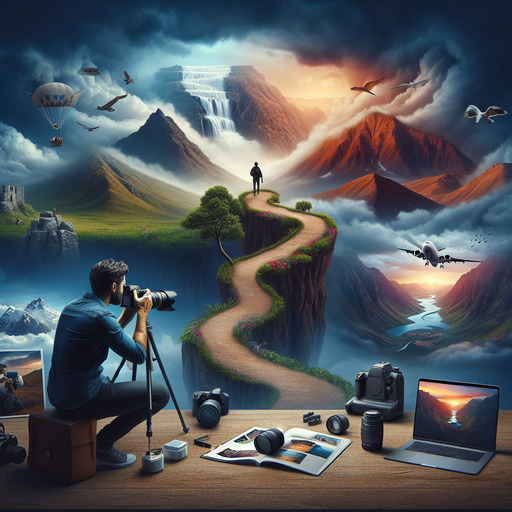
-
Table of Contents
- Mastering Photography: Tips and Techniques for Stunning Images
- Understanding the Basics of Photography
- Why Mastering the Basics is Crucial
- Advanced Photography Techniques
- Portrait Photography: Capturing Emotions
- Landscape Photography: Capturing Nature’s Beauty
- Editing and Post-Processing
- Enhancing Your Images with Editing
- Choosing the Right Photography Gear
- Investing in Quality Equipment
- Building a Photography Business
- Turning Passion into Profession
- Conclusion
- Questions and Answers
Mastering Photography: Tips and Techniques for Stunning Images
Photography is more than just capturing moments; it’s about telling stories through images. Whether you’re a budding photographer or a seasoned professional, understanding the nuances of photography can elevate your work to new heights. In this guide, we’ll explore essential photography tips, techniques, and insights to help you create captivating images.
Understanding the Basics of Photography
Why Mastering the Basics is Crucial
Before diving into advanced techniques, it’s essential to grasp the fundamentals of photography. Understanding the basics allows you to make informed decisions about composition, lighting, and camera settings.
- Exposure: Learn how to balance aperture, shutter speed, and ISO to achieve the perfect exposure.
- Composition: Use the rule of thirds, leading lines, and framing to create visually appealing images.
- Lighting: Master natural and artificial lighting to enhance the mood and tone of your photos.
Advanced Photography Techniques
Portrait Photography: Capturing Emotions
Portrait photography is about capturing the essence of a person. To excel in this genre, focus on the following techniques:
- Lighting: Use soft, diffused lighting to create flattering portraits.
- Posing: Guide your subjects to pose naturally, highlighting their best features.
- Background: Choose a background that complements the subject without distracting from them.
Consider the work of renowned portrait photographers like Annie Leibovitz, who masterfully captures the personality and emotion of her subjects.
Landscape Photography: Capturing Nature’s Beauty
Landscape photography requires patience and an eye for detail. Here are some tips to enhance your landscape shots:
- Golden Hour: Shoot during the golden hour for soft, warm lighting.
- Depth of Field: Use a small aperture to keep the entire scene in focus.
- Foreground Interest: Include elements in the foreground to add depth and interest to your images.
Take inspiration from photographers like Ansel Adams, known for his breathtaking black-and-white landscapes.
Editing and Post-Processing
Enhancing Your Images with Editing
Editing is a crucial step in the photography process. It allows you to refine your images and bring your creative vision to life.
- Software: Use tools like Adobe Lightroom and Photoshop for professional editing.
- Color Correction: Adjust colors to achieve the desired mood and tone.
- Retouching: Remove blemishes and enhance details for a polished look.
Remember, editing should enhance your images, not alter them beyond recognition.
Choosing the Right Photography Gear
Investing in Quality Equipment
While skill is more important than gear, having the right equipment can make a significant difference in your photography.
- Cameras: Choose a camera that suits your style and needs, whether it’s a DSLR, mirrorless, or compact camera.
- Lenses: Invest in quality lenses for versatility and better image quality.
- Accessories: Consider tripods, filters, and lighting equipment to enhance your photography.
Research and read reviews to make informed decisions about your gear investments.
Building a Photography Business
Turning Passion into Profession
If you’re considering a career in photography, it’s essential to understand the business side of things.
- Portfolio: Build a strong portfolio showcasing your best work.
- Marketing: Use social media and networking to promote your services.
- Client Relations: Develop strong relationships with clients to ensure repeat business.
Learn from successful photographers who have turned their passion into thriving businesses.
Conclusion
Photography is a journey of continuous learning and exploration. By mastering the basics, experimenting with advanced techniques, and investing in the right gear, you can create stunning images that tell compelling stories. Whether you’re capturing portraits or landscapes, remember that each photograph is an opportunity to express your unique perspective.
For more insights into photography, consider exploring resources like Wikipedia’s Photography Page.
Questions and Answers
Q1: What is the best time of day for landscape photography?
A1: The best time for landscape photography is during the golden hour, which occurs shortly after sunrise and before sunset. The soft, warm lighting during this time enhances the natural beauty of landscapes.
Q2: How can I improve my portrait photography skills?
A2: To improve your portrait photography skills, focus on mastering lighting techniques, guiding your subjects to pose naturally, and choosing backgrounds that complement your subjects.
Q3: What editing software is recommended for beginners?
A3: Adobe Lightroom is an excellent choice for beginners due to its user-friendly interface and powerful editing tools. It allows you to make adjustments to exposure, color, and more with ease.
If you’re interested in learning more about photography or our services, please reach out to us via our contact page.